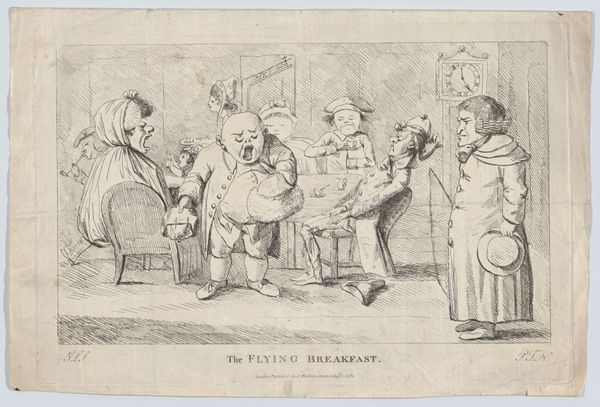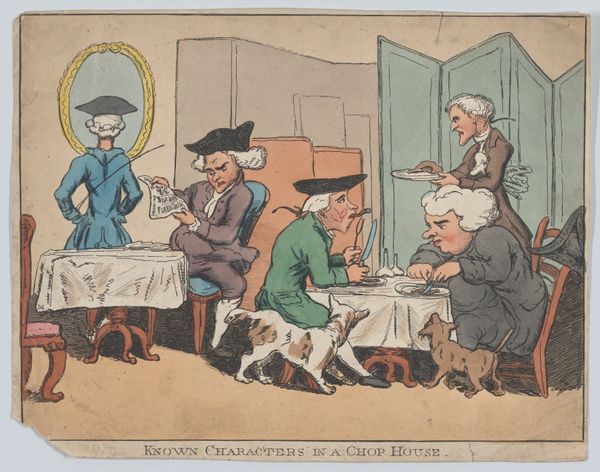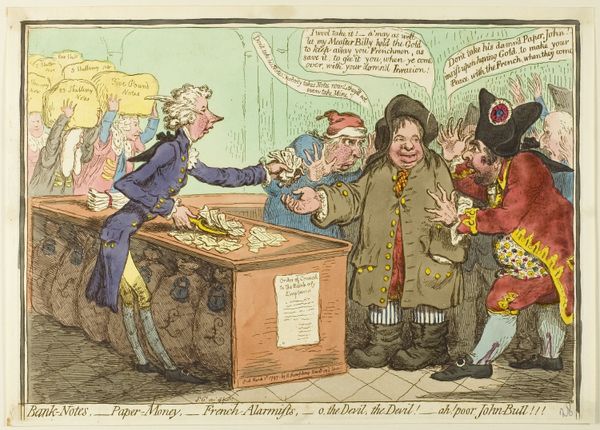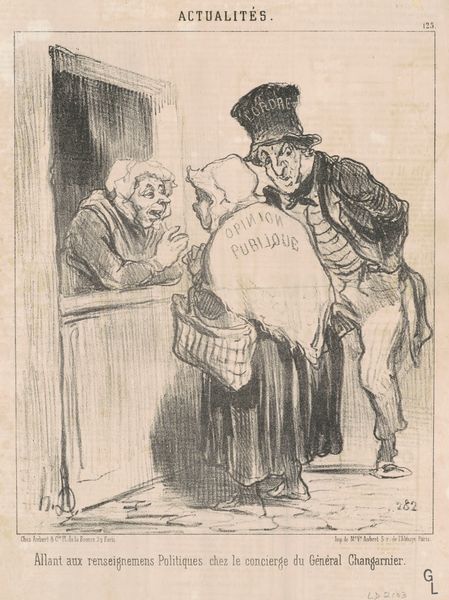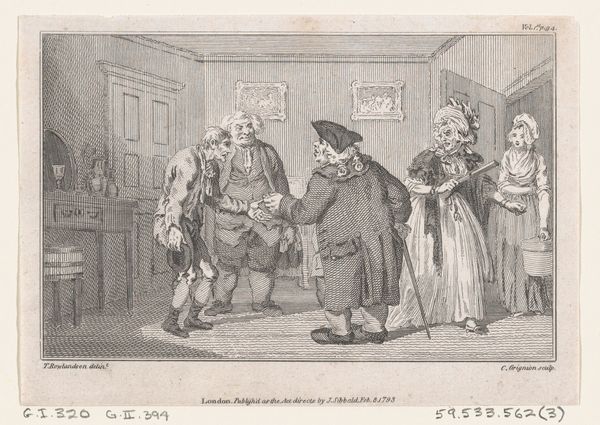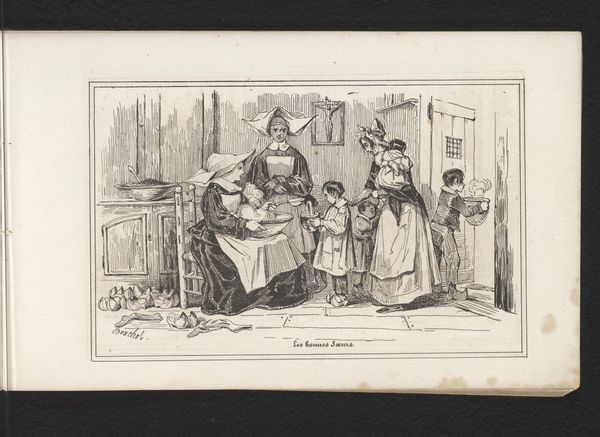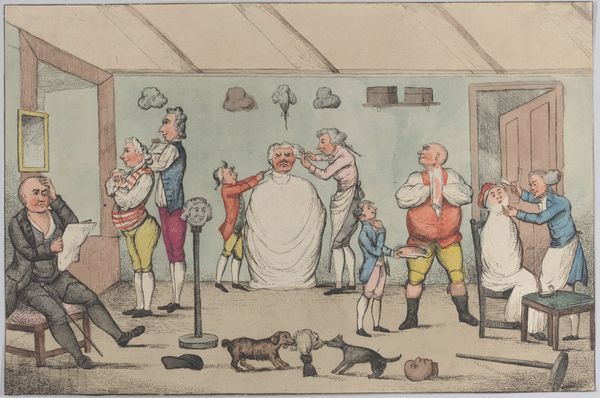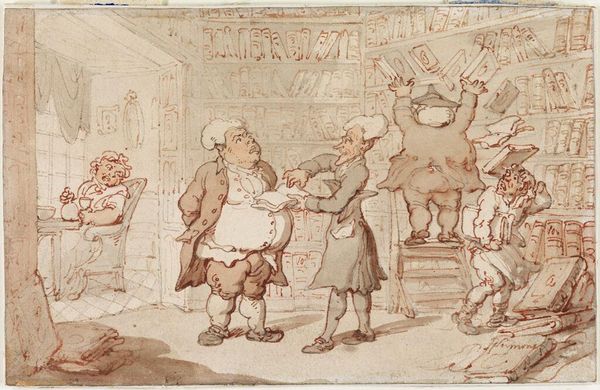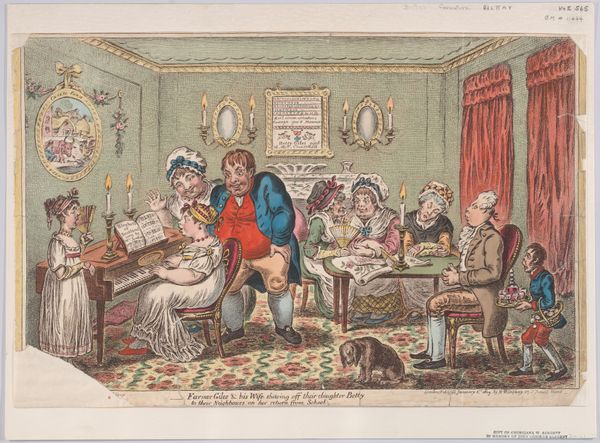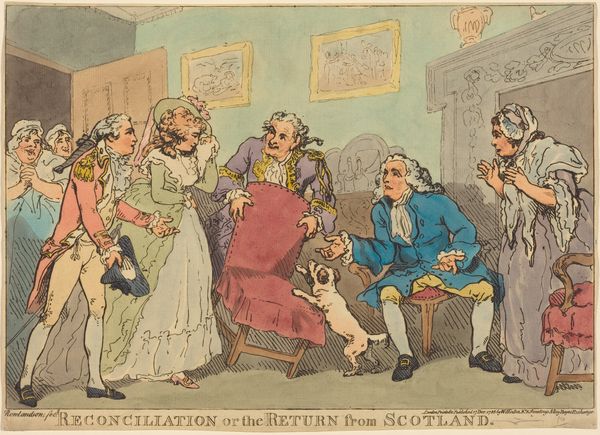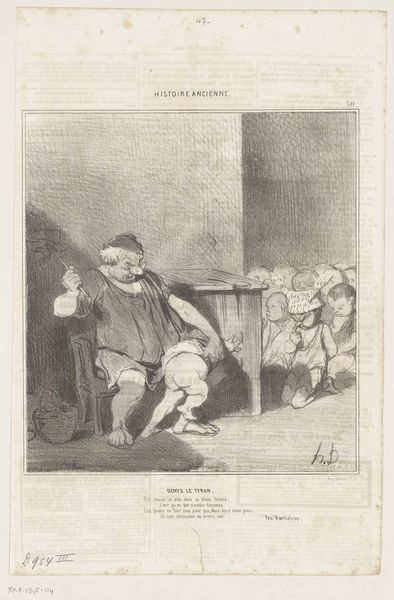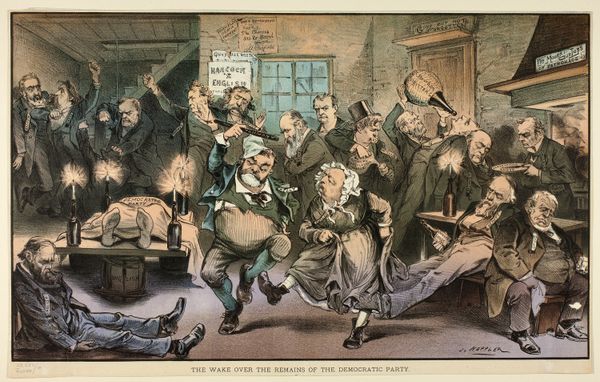
drawing, coloured-pencil, print, watercolor
#
drawing
#
coloured-pencil
#
water colours
# print
#
caricature
#
watercolor
#
coloured pencil
#
men
#
genre-painting
#
history-painting
#
watercolor
Dimensions: Sheet (trimmed within plateline): 8 9/16 × 12 7/8 in. (21.8 × 32.7 cm)
Copyright: Public Domain
Curator: Today, we are looking at a coloured pencil and watercolor drawing titled "The Flying Breakfast, or Contents of a Night Coach," dating back to 1792. The artwork, now held at the Metropolitan Museum of Art, is by an anonymous artist. It's quite the lively scene, wouldn't you agree? Editor: Lively is one word for it! My first impression is chaos. The colors are soft, almost pastel-like, but the composition feels like everything is in motion, ready to spill out of the frame. Look at the layering and saturation; there's definitely a focus on immediate material availability to translate urgency. Curator: Indeed. Consider the stagecoach itself as a powerful symbol of societal upheaval, where enclosed interiors intensify social anxieties during travel. The ‘flying’ elements speak directly to unpredictable encounters and compromised boundaries within the supposed order. Do you get a sense of discomfort and unease? Editor: Absolutely, and I find it interesting how that unease is materially produced. Look at the frenetic application of pigments here—clearly intended to provoke discomfort through immediacy rather than idealized craft. See, there are multiple textures due to the uneven mixing, pointing towards resource limitations, but also an almost nonchalant disregard for detail given the print would probably be mass-produced. Curator: Fascinating! Consider also how each character becomes a representative of certain societal failings – whether excess, disarray or exploitation. Observe how that bald man's posture is one of unrepentant privilege; that upright, judgmental figure a stark symbol of moral high ground. Editor: You’re highlighting the figures as a stand-in for ideological concerns. I read it similarly, in that I consider those ideological claims embedded within available labor techniques: like, quick reproduction suggesting an intent to reach larger audiences, or maybe a commentary itself on access to privilege as it extends beyond materials and into wider society through imagery consumption... Curator: Precisely. What stays with me is how visual symbols converge with underlying psychological states, reminding us of our human capacity for misinterpretation, and maybe even transformation when faced with disorder. Editor: Yes. To me, this all returns to this tangible item of material evidence from another time: something once quickly made and then bought to provoke ideas in a certain market about other economic concerns! That’s not something to overlook when you contemplate its imagery today.
Comments
No comments
Be the first to comment and join the conversation on the ultimate creative platform.
